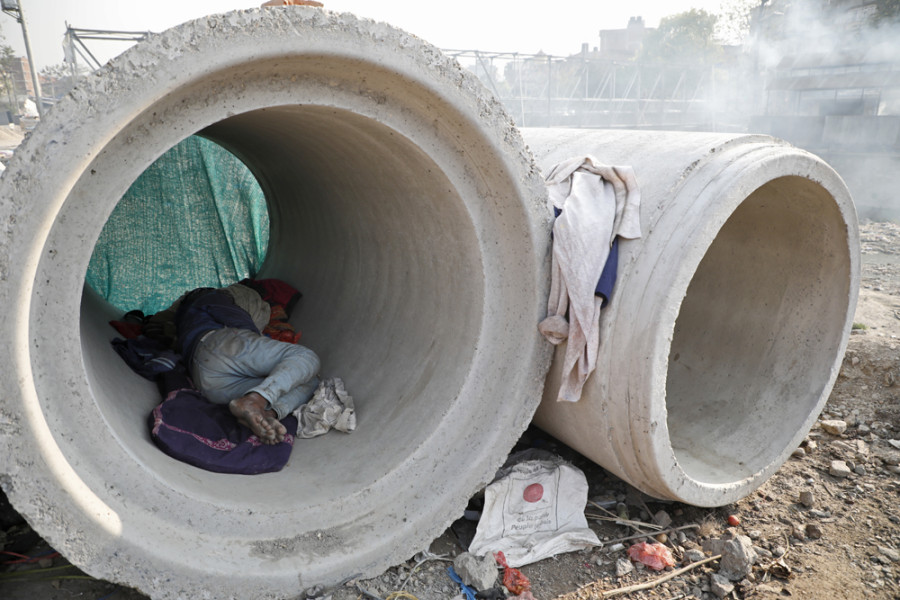Editorial
The street is their home
Homelessness has become a recurring problem owing to federal policy failure on poverty issues.
Kathmandu is Nepal’s capital, but it’s also the place where thousands of people sleep rough. The Kathmandu Metropolitan City came up with a plan two years ago to relocate beggars and the homeless from temple areas like Bhadrakali, Mahankal, Sankata, Pashupatinath, Swyambhunath, Baudhanath and tourist areas like Thamel to the Samakhusi-based Manab Sewa Ashram, a homeless shelter. The City allocated Rs30 million to relocate the homeless from the streets of Kathmandu. Yet, there are many that still sleep on the streets of the Capital. Many live around the Pashupati area.
Last year, the late Minister for Culture and Tourism Rabindra Adhikari declared Pashupati area a beggar free-zone. But just a little over a year after the announcement was first made, the area is filled with over six dozen beggars, most of whom are escapees from the ashram. And just as the temperature is going down, they face a harsh winter without proper shelter.
Homelessness has become a recurring problem owing to federal policy failure on the issues of poverty, but the consideration the issue receives from politicians is vapid. The problem is that the government is quick to make grand announcements, such as one claiming to make Nepal ‘beggar-free’, but there are no real plans on how it will do that.
The United Nations defines a homeless person as not only someone who lives on the street or in a shelter, but also someone whose shelter or housing failed to meet the necessary criteria considered essential for health and social development. This is precisely the problem in our case, where many who do have some form of shelter still are not living in safety and security. The government some years ago did relocate the homeless people to a shelter, but it has failed to monitor those shelters thoroughly. In fact, as reported in this paper, Sunita Nepali, who has been begging in front of the Sankata Temple for the past 15 years expressed her grief over how she has ‘never seen a government official come to visit’ them at the shelter homes.
What’s more, there isn’t sufficient data to estimate the true number of homeless people, let alone the number of people living in unsafe structures.
The objective behind building shelter homes should be to ensure the availability and access of those without a proper roof to permanent shelters, including basic infrastructure facilities like water supply, sanitation, safety and security. The government can start by first, collect accurate data on the number of people who are devoid of a secure roof over their heads. It can then decide on the number of homes needed and the facilities to be supplemented with the help of that data. People can’t be forced off the streets if they don’t have anywhere to go.
***
What do you think?
Dear reader, we’d like to hear from you. We regularly publish letters to the editor on contemporary issues or direct responses to something the Post has recently published. Please send your letters to [email protected] with "Letter to the Editor" in the subject line. Please include your name, location, and a contact address so one of our editors can reach out to you.




 8.12°C Kathmandu
8.12°C Kathmandu














